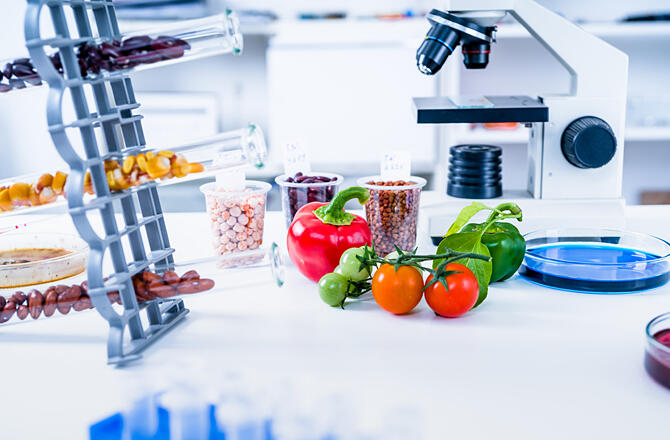Viable bacterial count is one of the most important indicators for the evaluation of the level of bacterial contamination in food products and is determined by counting the number of colonies formed on agar or sheet media. It is one of the inspection parameters for school lunches and food factories. However, this test method has a major problem; it requires 48 hours (h) of incubation and the test results are known only after the product has been shipped.
A research group led by Graduate Students Hikaru Ikeda and Akira Tokonami, and Professor Hiroshi Shiigi of the Graduate School of Engineering at Osaka Metropolitan University has developed an inspection technique that uses electric current to measure the viable bacterial count. Their technique has successfully reduced the inspection time from 2 days (d) to ∼1 h. The results have been published in Analytical Chemistry online bulletin.

Tetrazolium salts (MTT) are water-soluble molecules that are reduced upon the application of a voltage to produce electric current. MTT is also highly permeable to cell membranes and is converted to insoluble formazan upon entering viable cells.
The research group utilized these properties to develop an inspection technique for determining the viable bacterial count. Briefly, MTT was added to the suspension collected from a food sample and voltage was applied to it subsequently. The viable bacterial count was determined from the current response of the residual MTT in the suspension after penetrating viable cells. Microscopic observation of the viable cells in the suspension showed that MTT was incorporated into the viable cells within 40−50 minutes (min). The current response could be measured in 10 min. This meant that the measurement time decreased from approximately two days (∼48 h; required previously) to approximately one hour.
Using the newly developed method, food safety and prevention of food poisoning could be ensured prior to shipment from the factory. The electrochemical test method is advantageous because the size of the device is reduced, enabling the potential realization of portable sensors. In the future, research will be conducted to optimize the measurement conditions and fabricate devices for practical applications.
Shiigi commented, "We are developing a new detection principle that focuses on the physical signals produced by cells and bacteria in response to external stimuli, such as light, heat, and electricity. This technique can be applied to food and also to various other fields such as medicine, drug discovery, and public health. We shall continue our research to establish this technique as a test method and develop a sensor device."
Journal Information
Publication: Analytical Chemistry
Title: Evaluation of Bacterial Activity Based on the Electrochemical Properties of Tetrazolium Salts
DOI: 10.1021/acs.analchem.3c01871
This article has been translated by JST with permission from The Science News Ltd. (https://sci-news.co.jp/). Unauthorized reproduction of the article and photographs is prohibited.




